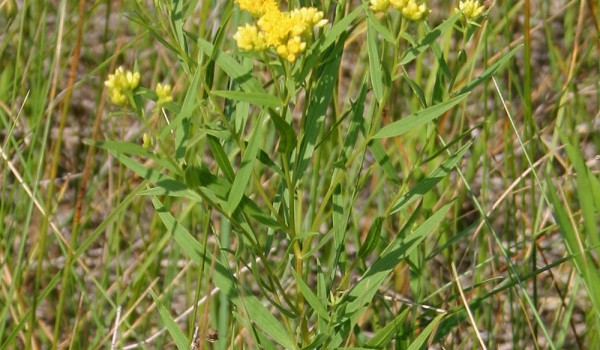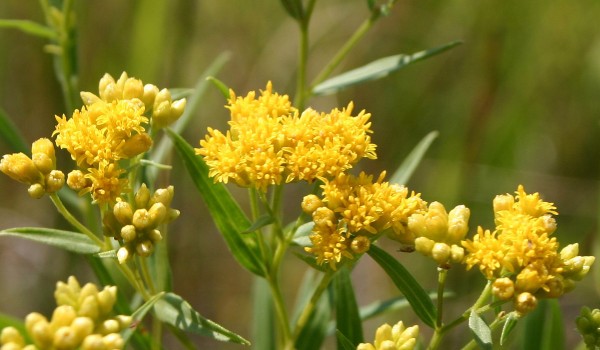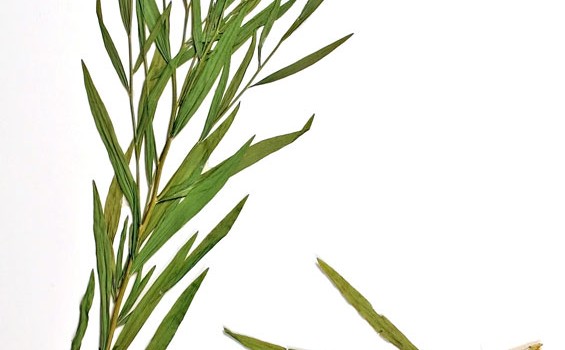Aster (Asteraceae)
Flat-top Goldenrod
Euthamia graminifolia (L.) Nutt.These prairie plants provide nectar for pollinators such as bees and butterflies, and are useful for pollinator restoration projects. Goldenrod Soldier Beetles are especially beneficial visitors, with adults pollinating flowers, and larvae feeding on pests such as aphids. Seeds provide food for small birds like sparrows, and vegetative parts food for rabbits and White-tailed Deer. Plants have also been used for medicinal purposes, and to make coloured dye.
Flower Colour:
- Yellow
Flowering Season:
- Summer
- Fall
Flowering Months:
- August
- July
- October
- September
Canadian Rarity Status:
Not rare. Listed as “sensitive” in the Northwest Territories.
Physical Appearance:
The hairy, branching stems of this perennial grow 30 - 122 cm tall. Leaves are alternate and grass-like with 1-3 prominent veins, the lower leaves shed early in life. Flowers are arranged into branching clusters of 20-35 small, cone-shaped heads that bloom from the outside in. Each head consists of ray florets, and 5-toothed, tube-shaped disc florets. The fruit is a small nutlet, the seed attached to a tuft of hair-like bristles.
Similar Species:
Gardening Notes:
Seeds and/or plants are often available from greenhouses and seed supply companies specializing in native plants. It can be propagated from seed or by dividing dormant plants.
Canadian Distribution:
- Alberta
- British Columbia
- Manitoba
- New Brunswick
- Newfoundland/Labrador
- Northwest Territories
- Nova Scotia
- Ontario
- Prince Edward Island
- Quebec
- Saskatchewan
Prairie Types:
- Fescue Prairie
- Mixed Grass Prairie
- Tall Grass Prairie
Habitats:
- Ditches
- Inter-dunal Flats
- Prairies
- Roadsides
- Wetlands
Moisture Conditions:
- Dry
- Moderate
- Moist
Light Preference:
- Full Sun
Soil Preference:
- Gravel
- Loam
- Sand
Associated Pollinators:
-
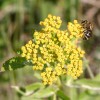 Andrenid Bees, Miner/Digger Bees (Andrenidae)
Andrenid Bees, Miner/Digger Bees (Andrenidae)
-
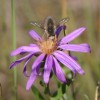 Bee Flies (Bombyliidae)
Bee Flies (Bombyliidae)
-
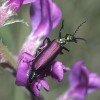 Blister Beetles (Meloidae)
Blister Beetles (Meloidae)
-
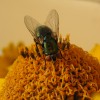 Blow Flies (Calliphoridae)
Blow Flies (Calliphoridae)
-
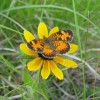 Brush-footed Butterflies (Nymphalidae)
Brush-footed Butterflies (Nymphalidae)
-
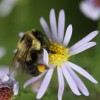 Bumble, Honey, and other Bees (Apidae (Subfamily Apinae))
Bumble, Honey, and other Bees (Apidae (Subfamily Apinae))
-
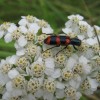 Checkered Beetles (Cleridae)
Checkered Beetles (Cleridae)
-
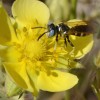 Crabronid Wasps (Crabronidae)
Crabronid Wasps (Crabronidae)
-
 Dark-winged Fungus Gnats (Sciaridae)
Dark-winged Fungus Gnats (Sciaridae)
-
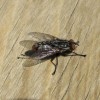 Flesh Flies (Sarcophagidae)
Flesh Flies (Sarcophagidae)
-
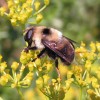 Flower Flies (Syrphidae)
Flower Flies (Syrphidae)
-
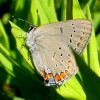 Gossamer-winged Butterflies (Lycaenidae)
Gossamer-winged Butterflies (Lycaenidae)
-
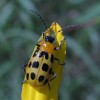 Leaf Beetles (Chrysomelidae)
Leaf Beetles (Chrysomelidae)
-
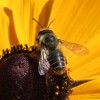 Leafcutter and Mason Bees (Megachilidae)
Leafcutter and Mason Bees (Megachilidae)
-
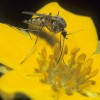 Mosquitoes (Culicidae)
Mosquitoes (Culicidae)
-
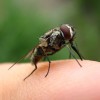 Muscid Flies (Muscidae)
Muscid Flies (Muscidae)
-
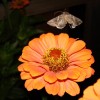 Owlet Moths (Noctuidae)
Owlet Moths (Noctuidae)
-
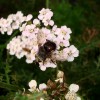 Parasitic Flies (Tachinidae)
Parasitic Flies (Tachinidae)
-
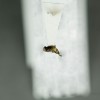 Picture-winged Flies (Otitidae)
Picture-winged Flies (Otitidae)
-
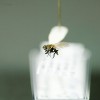 Root Maggot Flies (Anthomyiidae)
Root Maggot Flies (Anthomyiidae)
-
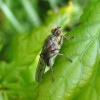 Scathophagid Flies (Scathophagidae)
Scathophagid Flies (Scathophagidae)
-
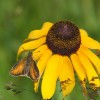 Skippers (Hesperiidae)
Skippers (Hesperiidae)
-
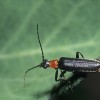 Soldier Beetles (Cantharidae)
Soldier Beetles (Cantharidae)
-
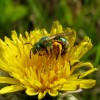 Sweat Bees, Halictid Bees and other Bees (Halictidae)
Sweat Bees, Halictid Bees and other Bees (Halictidae)
-
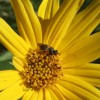 Thick-headed Flies (Conopidae)
Thick-headed Flies (Conopidae)
-
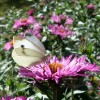 Whites, Sulfurs, Orangtips, Marbles (Pieridae)
Whites, Sulfurs, Orangtips, Marbles (Pieridae)
-
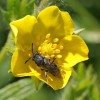 Yellow-faced Bees (Colletidae)
Yellow-faced Bees (Colletidae)
-
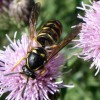 Yellowjacket, Potter, and other Wasps (Vespidae)
Yellowjacket, Potter, and other Wasps (Vespidae)






